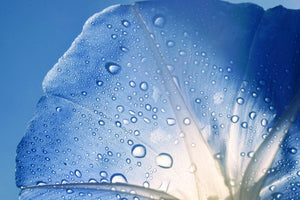Master Gardener Tips to Grow Buckets of Tomatillos for Salsa Verde
TomatillosThere’s no substitute for tangy tomatillos. These unique fruits have their own texture and taste. Growing your own will give you a healthy harvest for salsa verde and other delicious recipes. Follow these master gardening tips, and you’ll see how easy it is to grow tomatillos.

How to Grow Tomatillos From Seed
Starting tomatillos from seed is much like growing tomatoes. They need warm temperatures and sunshine. Tomatillo seeds have a high germination rate and are quick to sprout.
Pro Tips for fail-proof tomatillo seed germination
Start tomatillo seeds indoors 10 to 12 weeks before planting outside. This will give you plenty of time for the seedlings to develop and be strong for transplanting.
Plant tomatillo seeds 1/4” deep in small pots. You will be potting up at least once, possibly twice, so there’s no need to start in the largest possible pot.
For fast seed germination, keep the seeds moist and the soil temperature between 70 - 80º F. Tomatillo seeds will germinate in 5 to 10 days.
Once the seeds have sprouted, water tomatillo seedlings from the bottom to prevent damping off.
When the first true leaves emerge, transplant the seedling into a larger container. Between the time the tomatillo seedlings sprout and when they go outside in the garden, you will need to pot up. This means transplanting the seedlings into a larger pot before they become root bound. Potting up tomatillo seedlings also produces a stronger root system. When potting up, plant the tomatillo seedling deeper than it was. You can bury it up to the bottom leaves. Each time you transplant or pot up, you can plant the stem deeper to allow for better root growth. Like tomatoes, tomatillos will produce more roots from their stem when they touch the soil.
Once the tomatillo seedlings are growing, the soil temperature can be 65 to 70º F.
Harden off tomatillo plants before transplanting outdoors.
Pro Tips for transplanting tomatillo seedlings
Take the time to harden off your tomatillo seedlings before transplanting outdoors. These heat-loving plants will be much stronger if you give them time to acclimate to their outdoor environment.
Tomatillos are heat-loving plants that can’t tolerate frost. So make sure not to put them out too early. The soil should be at least 60º F.
Tomatillo plants should have 5 to 7 leaves before transplanting.
Like tomatoes, you can plant tomatillos deeply. This will allow extra root growth from the buried stem.
Space plants 36” apart into fertile soil that drains well. A pH of 6.0 to 6.8 is optimal.
Plant at least 2 tomatillo plants near each other for cross-pollination. They will not be able to produce fruit otherwise.

How to grow tomatillo plants
The most important tip for a successful harvest of tomatillos is to grow at least 2 plants next to each other. Tomatillos flowers cannot pollinate themselves or flowers on the same plant. They need to cross-pollinate with another tomatillo plant. The plants need to be close enough that bees and other pollinating insects can easily move from plant to plant, fertilizing the flowers.
Location is important. Tomatillos need full sun, so choose a location that gets at least 6 hours of direct sunlight daily. They love the heat and will thrive in hot climates.
Adding a layer of mulch will keep weeds down and help the soil retain moisture.
Tomatillos will need 1 to 2 inches of water a week. The soil can be moist between waterings but not soggy. Waterlogged soil will result in root rot. When watering tomatillo plants, direct the water onto the ground and keep the leaves dry to avoid fungus and diseases.
You can add fertilizer around four weeks after transplanting. After that, they don’t need extra nitrogen but phosphorus and potassium. Like most vegetables, nitrogen encourages more leaf growth and less produce.
Set up a trellis or support system when tomatillo plants are young. Healthy tomatillo plants will have a thick stem like tomato plants, but it is stiffer and can break in the wind.
Tomatillos will naturally spread all over the ground, so it’s easier to stake them early and train them to grow vertically. Growing vertically will also allow more air circulation and access to that all-important sunshine.
Pruning tomatillos will keep fruits and leaves off the ground. Anywhere the stems touch the ground, they will start growing roots. Also, fruit on the ground will rot.
Pruning or pinching the ends will also stop the growth if you want to keep the plants from spreading.
Solutions for tomatillo pests and diseases
The husks do a good job of protecting the tomatillo fruits from birds and other pests. However, the leaves are a tasty snack for flea beetles and aphids. Usually, these don’t do enough damage to make the plant suffer.
Companion planting can help control pests and attract beneficial pollinators. For example, nasturtiums and marigolds are great neighbors for tomatillos. Onions, hot peppers, and peas also make good neighbors for tomatillo plants.
Rotate tomatillos crops and don’t plant them in the same place as other nightshades for two years to limit soil pathogens.

Harvesting and Storing Tomatillos
Within 75 to 100 days, the tomatillos will be ready to harvest.
A ripe tomatillo is firm and green. The fruit will fill out the papery husk. To check if a tomatillo is ripe, lightly press on the husk. If you can feel the tomatillo is right up to the husk, it’s ready to pick. They may also start to push through the husk when they are ripe. An overripe tomatillo will begin turning yellow and will have less flavor.
If the tomatillos fall off before they are ripe, pick them up off the ground. Leave them in the husk and store them indoors, where they will continue to ripen.
Keep picking tomatillos throughout the growing season, and they’ll keep producing.
Cut ripe tomatillos from the plant and leave them in their husks until ready to use.
Tomatillos can be stored at room temperature for about a week. They will last about three weeks stored in a paper bag in the refrigerator.
Peel off the husk when you are ready to use them. They will have a sticky residue that you can rinse off.
Before the first fall frost, you can pull the whole plant out of the ground and hang the plant indoors to let the tomatillos finish ripening.
Tomatillos can be frozen without blanching for longer-term storage.
“Toma Verde” is a traditional, heirloom tomatillo variety. Toma Verde is an easy-to-grow, compact tomatillo plant that matures early with high yields. Plant at least 2 tomatillo plants in your garden for an abundant harvest for salsa verde.
We had a wonderful harvest of tomatillos this year! There are lots of ways to enjoy fresh tomatillos and our favorite is a tasty bowl of Salsa Verde.
Our favorite Salsa Verde recipe comes from our friend Lori at TheKitchenWhisperer.net.
Her recipe includes excellent step-by-step instructions as well as tips and substitution ideas.
If you grew tomatillos - you need to try this recipe.
If you haven’t grown tomatillos yet, you’ll want to add them to your seed list after reading this recipe.
FAQs about Tomatillos
Can I grow tomatillos in pots?
Tomatillos are excellent plants for container gardening. When planting tomatillos in pots, make sure you have another tomatillo nearby and that you have a way to keep vines up off the ground.
Do you plant tomatillos deep like tomatoes?
Like tomatoes, tomatillos will produce more roots from their stem when they touch the soil. As tomatillo seedlings grow, you can “pot up” and bury them deeper than they were before. This method will help develop a strong and healthy root system.
Do I need two tomatillo plants?
Tomatillos don’t self-pollinate like tomatoes. Therefore, you will need at least two tomatillo plants close to each other for successful pollination.
How big do tomatillos grow?
Tomatillo fruits will vary in size. However, you can plan on one tomatillo plant producing a pound of fruit.
Do I need to fertilize tomatillos?
Applying extra nitrogen will only encourage more leaf growth.
Why are the tomatillo husks empty?
Empty husks mean the fruits are not being pollinated. Are there bees in your garden? If it’s been too wet or too hot, that can affect the pollinators.
Is salsa verde calling your name?
Start growing tomatillos and get your buckets ready for an abundant harvest!







Leave a comment